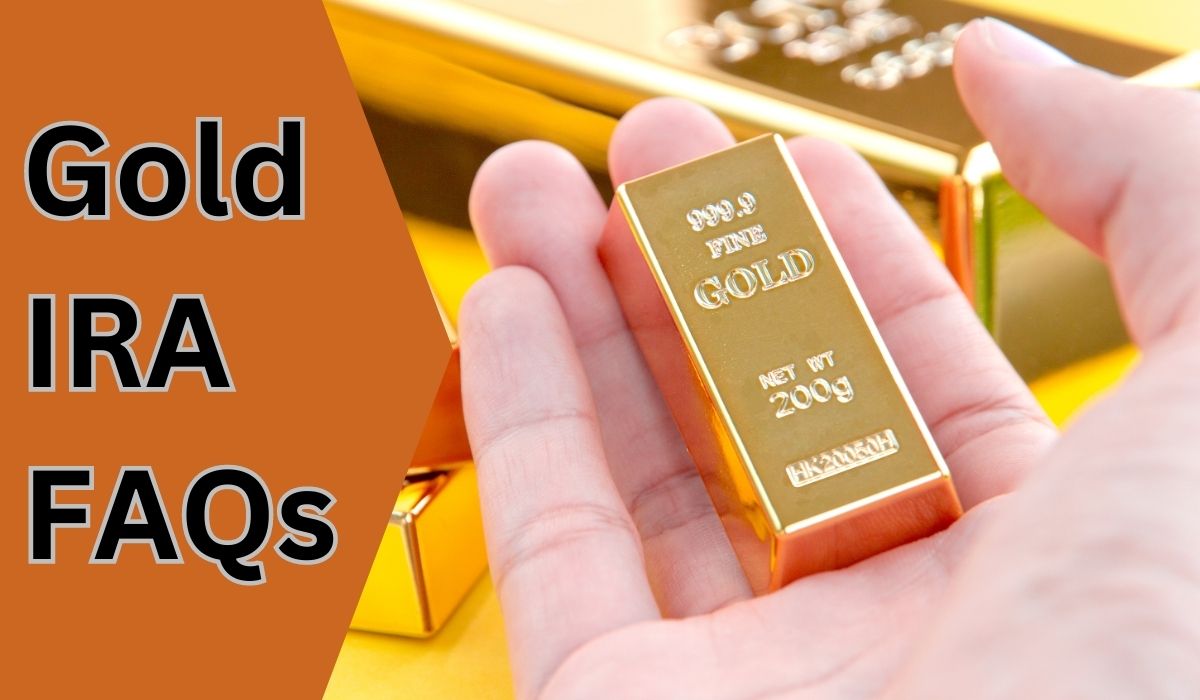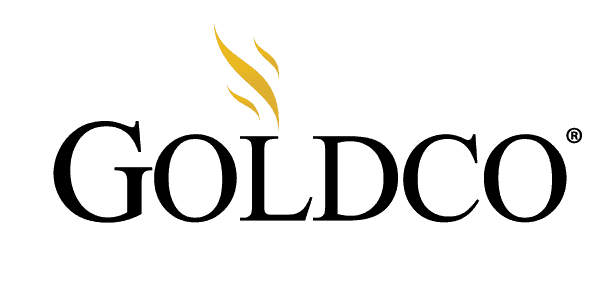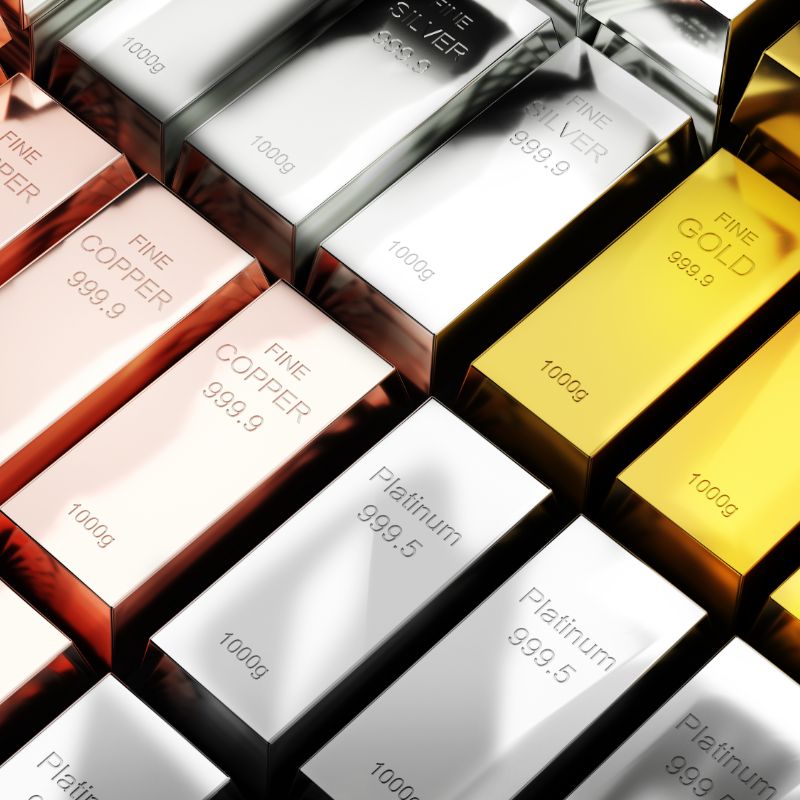Important Gold IRA FAQs You Should Know About

With the rise in economic uncertainties, many investors are considering alternative investment options to protect and diversify their portfolios. One such option that has gained significant popularity among enthusiastic clients is a gold IRA.
You can confidently pursue this investment option by reviewing the following gold IRA FAQs. Remember to consult with an IRA custodian to ensure that you make informed decisions about purchasing gold and silver within your IRA account.
What Is a Precious Metals IRA?
A precious metals IRA is a retirement account that holds and owns physical precious metals such as gold, silver coins, platinum bullion, gold coins, and even palladium bars.
Introduced after the Taxpayer Relief Act of 1997, IRA holders gained the ability to purchase gold and other precious metals with their funds. This expansion opened up a world of exciting opportunities for individuals seeking to protect and grow their wealth.
It also allows individuals to invest in physical metals rather than traditional paper assets like stocks, bonds, or mutual funds.
Can I Invest in Physical Precious Metals with Funds from My Retirement Account?
You can use funds from a previous retirement account to purchase precious metals. Clients can store the gold and silver purchased in a precious metals IRA.
What Kind of Precious Metals Can I Store in a Precious Metals IRA?
It’s no secret that investing in precious metals can provide a strong hedge against inflation and economic uncertainty. However, it’s important to understand your options when considering a precious metals IRA.
The four main types of precious metals you can store in a precious metals IRA include the following:
- Gold
- Platinum
- Silver
- Palladium
These metals offer unique features and benefits, making them valuable assets for your retirement portfolio.
-
Gold
Gold is perhaps the most well-known and sought-after precious metal. It has been a symbol of wealth and prosperity for centuries. When it comes to gold investments, you have a variety of options.
Popular choices include American Gold Eagles, which come in various sizes, such as 1 ounce, 1/2-ounce, 1/4-ounce, and 1/10 ounce.
Additionally, gold bars and coins are also commonly chosen. It is important to note that gold for precious metals IRA purposes must have a purity of at least 0.995%.
-
Silver
Moving on to silver, this precious metal has to be at least 0.999% pure to be eligible for a precious metals IRA.
Silver is famous for its industrial uses and is a widely traded commodity. Many investors choose to include silver in their portfolios as it provides an affordable entry point for diversifying their holdings.
-
Platinum
This is another popular choice for a precious metals IRA. Platinum bullion is highly valued for its rarity and durability. Like silver, platinum must also be at least 0.9995% pure to qualify for a Roth IRA investment.
Investing in platinum offers a unique opportunity to diversify your portfolio and potentially benefit from the industrial demand for this precious metal.
-
Palladium
Lastly, we come to palladium. Like platinum, palladium must be at least 0.9995% pure to be eligible for a precious metals IRA. Palladium is popular for its applications in the automotive industry, particularly in catalytic converters.
Its scarcity and increasing demand make it an attractive investment option for those seeking to include a less traditional precious metal in their self-directed IRA.
Will I Get a Gold Certificate If a Precious Metals IRA Holds My Gold?
No, a gold certificate is not typically issued when storing gold in a Precious Metals IRA. In its traditional form, a gold certificate is just a paper representing a specific amount of gold.
You can exchange the certificates for gold coins or bars. However, when you set up an account with an IRA custodian for a precious metals IRA, you do not receive a certificate. Instead of a gold certificate, a precious metals IRA will own the bullion and coins on your behalf.
By choosing this investment option, you gain ownership of the physical gold stored in a secure and approved depository while still enjoying the tax benefits of an IRA account.
What Are the Fees Associated with a Precious Metals IRA?
An annual maintenance fee is one of the most common fees associated with a precious metals IRA. The custodian typically charges this fee to cover administrative costs, such as account maintenance, statements, and filings.
This fee can vary depending on your chosen custodian, but a fixed amount is usually deducted from your account each year. It is important to review the fee schedule of potential custodians to understand the annual maintenance fee they charge.
Another fee you may encounter when investing in a precious metals IRA is the storage fee. Since physical precious metals must be stored in secure facilities, custodians usually collaborate with storage facilities to provide this service.
Storage fees can vary depending on factors such as the type and quantity of metals you choose to hold, as well as the location of the storage facility.
Generally, the more metals you have and the longer you store them, the higher the storage fees will be. Considering these costs when evaluating your investment’s overall profitability is important.
In addition to the aforementioned costs, you may encounter transaction fees when dealing with a precious metals IRA. The custodian will charge these fees when you buy or sell precious metals within the account.
Transaction fees can sometimes vary depending on your chosen custodian, so it’s important to understand the structure before initiating any transactions.
Some custodians may charge a flat fee per transaction, while others may charge a percentage based on the value of the transaction.
Why Are Precious Metals IRAs so Expensive?
Navigating the world of retirement planning can be complex, particularly when selecting the right investment vehicle.
Precious metals Individual Retirement Accounts (IRAs) have gained considerable attention in recent years thanks to their ability to offer a hedge against market volatility. However, one common concern among investors is the perceived high cost associated with these accounts.
A self-directed IRA, unlike large commercial banks such as JP Morgan or Merrill Lynch, allows clients to maintain control over their investment decisions. These self-directed IRAs do not charge clients more than the fees mentioned above.
The custodian costs cover administrative tasks, record-keeping, and compliance. While these fees are necessary to maintain the integrity of the self-directed IRA, they are generally reasonable and transparent.
Additionally, precious metals held in an IRA must be stored in an authorized depository. The depository ensures the security and safekeeping of these IRA assets.
While this service comes with a cost, it is an indispensable aspect of maintaining the physical integrity of precious metals.
The higher fees associated with depository services aim to cover operational expenses and ensure the utmost security for clients’ investments.
What Is the Difference Between a Gold IRA Rollover and a Gold IRA Transfer?
An IRA transfer involves moving funds from one self-directed IRA to another custodian. It is a transparent and straightforward process that securely transfers your retirement assets.
All it needs is for the account holder to sign the necessary papers, which are then sent to the IRA custodian. The overseer then transfers the retirement assets to the new account.
One of the significant advantages of an IRA transfer is that there are no tax implications. You can transfer funds between two different self-directed IRAs without incurring any penalties or early withdrawal fees.
On the other hand, a gold IRA rollover is a more efficient method of moving funds from a traditional IRA to another custodian.
Unlike a transfer, you can do a rollover between different retirement accounts multiple times. You can transfer funds from a 401(k) to a gold IRA. With a gold IRA rollover, you can move the assets directly between the two custodians.
The account holder has 60 days to complete the rollover, ensuring a seamless transfer of funds to a new retirement account. However, it’s crucial to note that failure to do so within the specified time frame will result in tax implications and penalties for early withdrawal.
Deciding between a gold IRA rollover and a transfer can be critical for retirement planning. It’s recommended to consult with a financial expert who specializes in retirement investments and precious metals.
They can guide you through the process, helping you choose the best option based on your unique financial situation and goals.
Can Clients with a Roth IRA Purchase Physical Gold?
If you’re interested in diversifying your retirement portfolio and want to explore different investment options, you may be wondering if it’s possible to own gold as part of a Roth IRA.
The good news is, yes, you can own gold and silver coins and other precious metals with a Roth IRA. It’s a strategic move that many investors are considering to safeguard their portfolios and take advantage of the benefits that gold can offer.
What Is a Silver IRA?
A Silver IRA can be a traditional IRA, Roth IRA, SEP-IRA, or SIMPLE IRA. It allows account holders to own different forms of physical silver coins and bars.
This means that instead of investing solely in traditional assets such as stocks, bonds, or mutual funds, you have the opportunity to include precious metals like American Silver Eagles and bits of gold in your retirement account.
What Is a Palladium IRA?
This often-overlooked precious metal has gained momentum in recent years, making it an ideal asset for those seeking to own a unique investment.
Like its sister metals, gold and silver, palladium is considered a tangible asset that can hedge against inflation and economic turbulence. By owning palladium within your self-directed IRA, you gain exposure to this precious metal and enjoy the potential tax advantages of a retirement account.
In recent years, palladium has demonstrated its worth as a haven asset by consistently outperforming other precious metals. Its growing demand in the automotive and electronics industries, coupled with limited supply, has resulted in substantial price appreciation.
What Is a Platinum IRA?
A platinum IRA is a self-directed IRA that allows individuals to invest in approved platinum coins and bullion forms.
This unique investment vehicle allows investors to diversify their retirement portfolio and potentially benefit from the long-term value of platinum.
What Is a Gold IRA?
A gold IRA lets you invest in gold bars or bullion. Depending on your financial goals and preferences, it can be either a traditional IRA or a self-directed IRA.
How Can I Set Up a Gold IRA?
You must follow a few simple steps to set up a gold IRA. First, you’ll have to choose a reputable gold IRA company specializing in precious metals IRA services.
Look for an organization with a solid track record, positive customer reviews, and exceptional customer service.
Once you’ve selected a reputable gold IRA company, you’ll work with it to open a new account or transfer funds from a traditional or Roth IRA.
The process typically involves completing paperwork and funding your new gold IRA using IRA funds. After your gold IRA account is set up, the company will assist you in purchasing gold for your retirement account.
Working with a reputable precious metals dealer ensures you purchase genuine, IRS-approved gold products, such as American Gold Eagles or other eligible coins or bars.
Once purchased, your gold will be securely stored in a designated depository that meets all IRS guidelines. These depositories have state-of-the-art security systems, providing peace of mind that your precious metals are safe and protected.
Can I Use a Retirement Plan to Buy Precious Metals?
To buy precious metals using your retirement plan, you must roll over funds from your 401(k) or TSP to a self-directed IRA. This involves transferring your retirement savings from one account to another without triggering any taxes or penalties.
Not all employers allow for in-service rollovers, so it’s crucial to speak with your employer or human resources department to understand their specific policies.
If your employer does allow for in-service rollovers, you can initiate the process by filling out the necessary paperwork and working with a custodian or trustee who specializes in self-directed IRAs. The custodian will handle the rollover process and ensure all IRS rules and regulations are being met.
Can Clients Store Precious Metals at Home?
The Internal Revenue Service (IRS) requires that individuals’ precious metals are stored in a safe and secure IRS-approved depository with a custodian or trustee.
In fact, storing precious metals at home and not in a self-directed IRA can result in penalties imposed by the IRS.
You might wonder why the IRS has stringent regulations for storing precious metals. The primary reason is to ensure the integrity and security of these valuable assets.
The IRS states that the depository must be approved when storing precious metals. This means the facility meets strict security, insurance, and reporting standards.
IRS-approved institutions typically include federal banks, insured credit unions, loan associations, savings organizations, etc.
Storing IRA-eligible precious metals at home means you are not taking advantage of the protections offered by an insured depository and a custodian or trustee. In case of theft, loss, or damage, you may not be covered by insurance or have any legal recourse.
Do I Have to Pay Taxes If I Transfer Money to a Gold IRA Account?
The good news is that there are no tax implications for moving funds from an existing IRA to a gold IRA as long as it is done correctly and within the guidelines set by the Internal Revenue Service (IRS).
This means that if you transfer funds from traditional or Roth IRAs to gold IRAs, you can do so without incurring any tax liability. It’s important to note that this applies to transfers, not early withdrawals.
Withdrawing funds from your existing IRA before reaching the age of 59½ can result in early withdrawal penalties and may subject you to income taxes. However, you can avoid these fines by following the proper procedures and completing a direct transfer.
What Happens to My Gold IRA Account After I Pass Away?
Planning for the future is essential, especially regarding your financial assets. Gold IRAs are an excellent way to diversify your investment portfolio and protect your hard-earned money. However, what happens to your gold IRA account if you were to pass away?
When you die, your assets, including those in gold IRAs, will be transferred to your beneficiary or multiple beneficiaries as per your wishes.
It is crucial to have a designated inheritor to ensure a smooth transition of your IRA account assets. You can add the nominees when creating a new self-directed IRA or update your account receiver.
The transfer process typically involves presenting a death certificate and other required documents. It is recommended to consult with a financial advisor or custodian to ensure you have everything in order.
In the event of an untimely death, it’s important to note that the beneficiaries will inherit the account without paying immediate taxes.
However, they must take distributions based on their life expectancy. These distributions are subject to applicable taxes at the inheritor’s tax rate.
Where Are Most Physical Precious Metals Stored?
The security and safety of your investments are of utmost importance, which is why many investors choose to store their precious metals with the following custodians and storage facilities:
-
CNT Depository in Bridgewater, MA
-
International Depository Services (IDS) in New Castle, DE
-
Delaware Depository Service Company (DDSC) in Wilmington, DE
It’s worth noting that while these facilities provide secure storage, they may also offer additional services such as insurance, inventory management, and account reporting.
Are All Precious Metals IRAs Insured?
To provide maximum protection for your investment, reputable custodians collaborate with renowned and trustworthy global insurance providers.
Companies such as Lloyd’s of London and Travelers are well known for their expertise in insuring high-value assets, including precious metals.
By partnering with these reputable insurers, custodians ensure that your investment is backed by credible coverage, giving you added confidence in your precious metals IRA.
How Can I Pay Annual Precious Metals IRA Fees?
Investors can use credit cards, cash, or other alternatives, depending on their financial institution, to ensure their fees are taken care of conveniently. The fees you pay are also 100% tax-deductible, providing you with an additional financial benefit.
Can I Visit a Precious Metals IRA to See My Physical Gold?
When physically visiting your precious metals IRA, some depositories offer the option for investors to schedule monthly appointments to view their holdings.
This allows you to see and physically inspect your physical gold, providing an added level of transparency and peace of mind.
Can I Store All Kinds of Metals in a Precious Metals IRA?
You can store gold, silver, platinum, and palladium in a precious metals IRA. However, you can’t store rhodium, titanium, tungsten, etc.
What If My Traditional IRA Doesn’t Offer Physical Gold and Other Precious Metals?
If you’re someone who recognizes the long-term value and stability of gold and other precious metals, you may find yourself wondering what you can do if your traditional IRA doesn’t offer this investment option.
Fortunately, there are solutions available that can help you move your retirement savings into another self-directed IRA that allows you to invest in these valuable assets.
One option is to roll over your traditional IRA to a different custodian that does offer gold and other metals. This process allows you to transfer your retirement funds tax-free to a new custodian specializing in precious metal investments.
By doing so, you can take advantage of the potential benefits of gold, silver coins, platinum bullion, and palladium without sacrificing the tax advantages of your traditional or SEP-IRA.
Be sure to carefully review the terms and conditions of the transfer to ensure that you fully understand any potential fees.
Final Words
Opening an Individual Retirement Account (IRA) is crucial to ensure financial security during retirement. Investing in precious metals like gold presents a unique opportunity for many.
However, navigating the world of gold IRAs can be overwhelming, as there are numerous considerations and questions to address.
We hope our gold IRA FAQs section has cleared up any confusion or doubts you may have had. Investing in precious metals is a long-term strategy, and careful consideration should be given before taking any steps forward.




